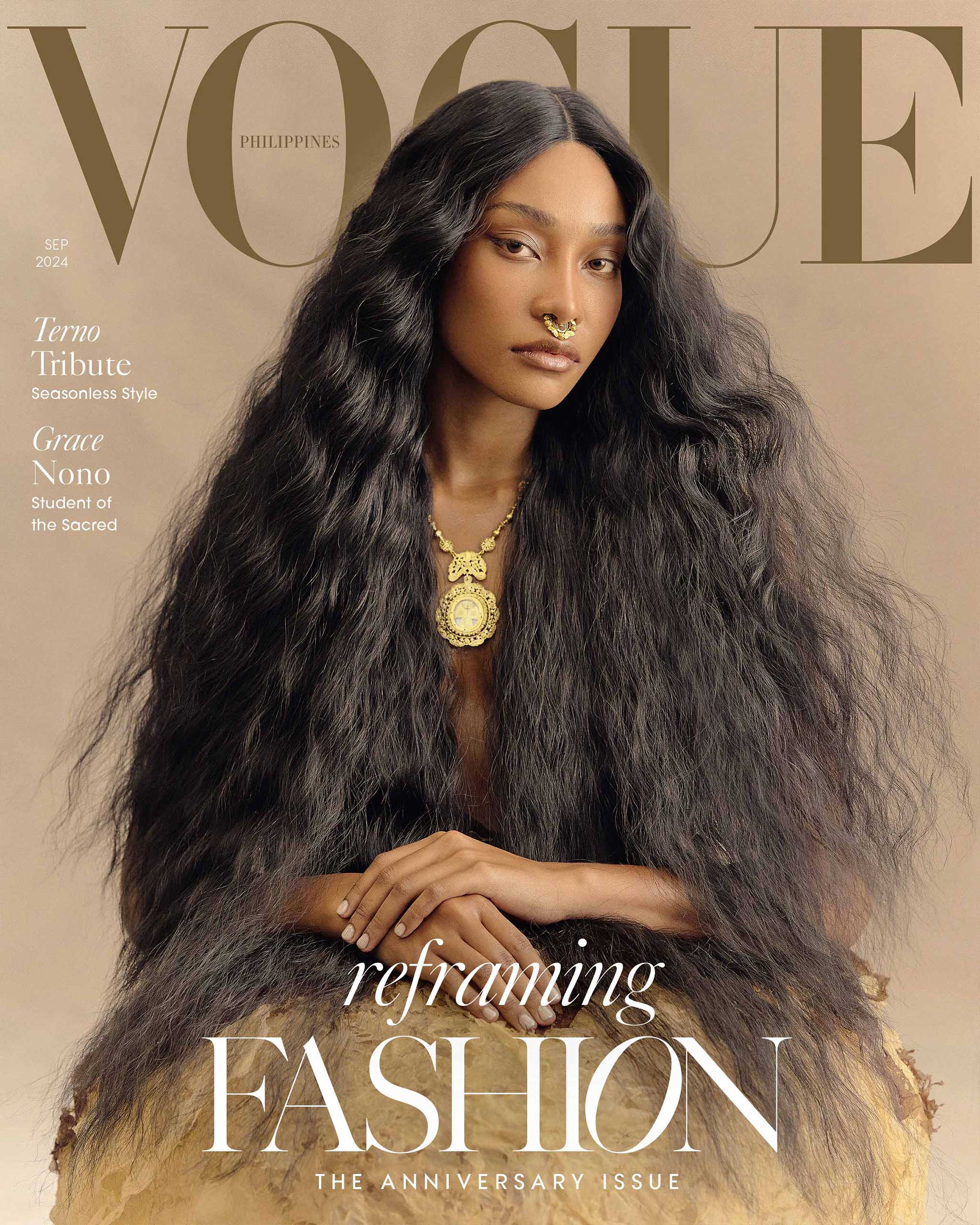Hair is molded and twisted to elaborate braids, rosettes, and tight coils in a modern interpretation of Filipino history.
Even in the 16th century, the natives living across the archipelago were noted for their intricate hairstyles and fastidiousness with hair care. The Spanish who arrived in the Visayas observed that the inhabitants were adorned from head to toe—their skin was covered in tattoos and their teeth pegged with gold, if not stained with betel juice and colored with other natural dyes. Though some were barely dressed, they wore gold jewelry in abundance, from intricate woven necklaces to bangles and earrings and belts that were crafted with astounding fineness. The women often had ankle-length long dark hair which they tied up in big knots and chignons, to which they increased its volume further by adding hair extensions. Nobody was allowed to touch their hairdos.
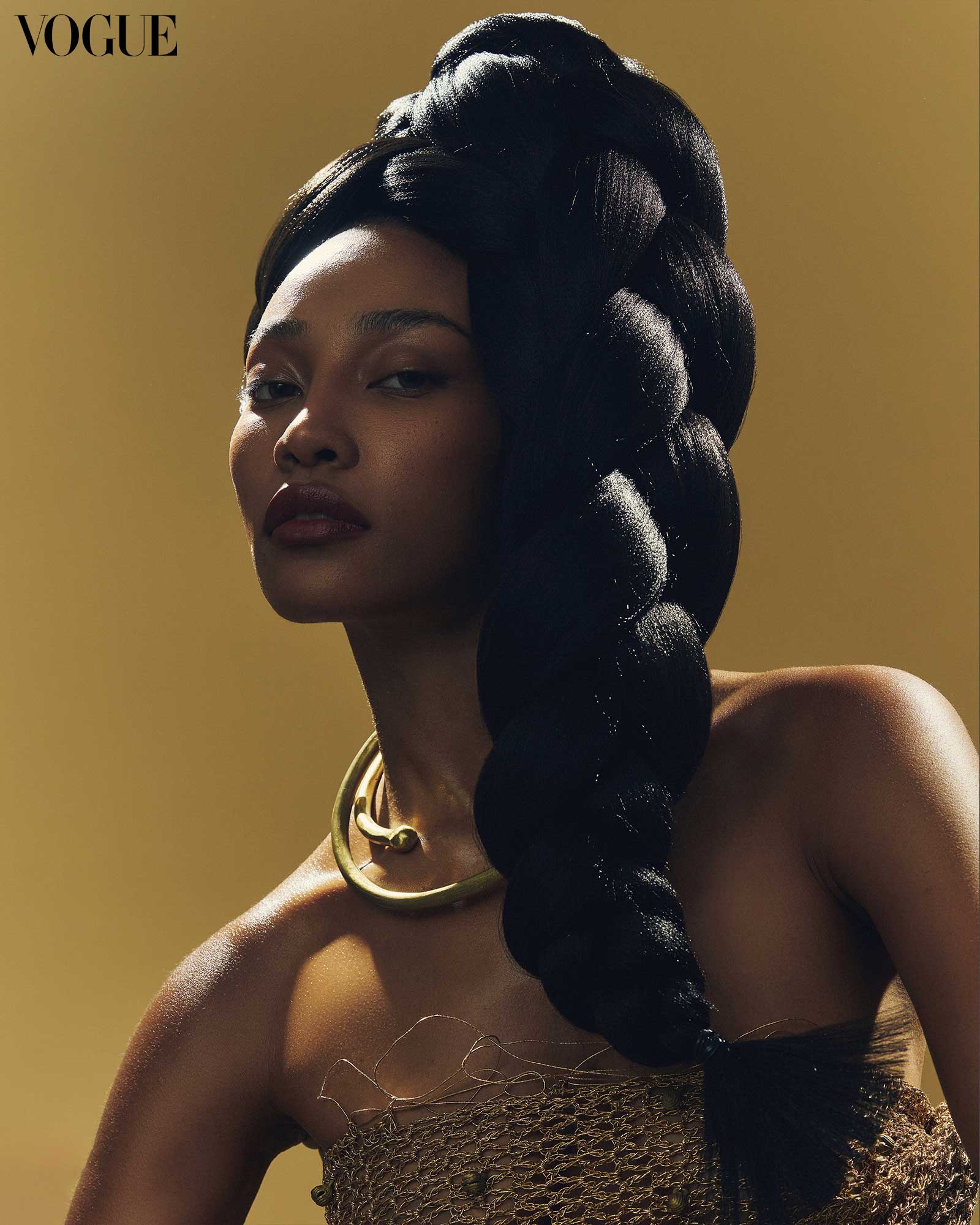
After five decades in the Visayas, the Spanish moved north to the island of Luzon where they enthusiastically recorded their new discoveries. They found the men and women to be similarly particular about their hair—a symbol of beauty and status—and personal hygiene in general. The Jesuit priest Pedro Chirino, in his work Relacion de las islas Filipinas commented on their seeming obsession with cleanliness: “They bathe at all hours indiscriminately, for pleasure and cleanliness, and not even women who have just delivered avoid bathing or fail to immerse a newly born infant in the river itself or in the cold springs.”
The Tagalogs washed their hair with a shampoo made from the gugo bark, which is soaked in water and rubbed to produce a soapy foam. Emerging from their river baths, they anointed their heads with sesame oil mixed with civet musk, and other oils, flowers and aromatics to make themselves fragrant. The word “clean” was expressed with at least seven adjectives: masali, masaya, masusi, mawakya, mawali, mawaloy, mawani, mapagi, the last word referring to the stingray, whose skin was used as sandpaper. In his compilation Ancient Customs and Beliefs of the Tagalogs, the linguist Jean-Paul Potet remarks that some priests found these cleanliness practices reprehensible.
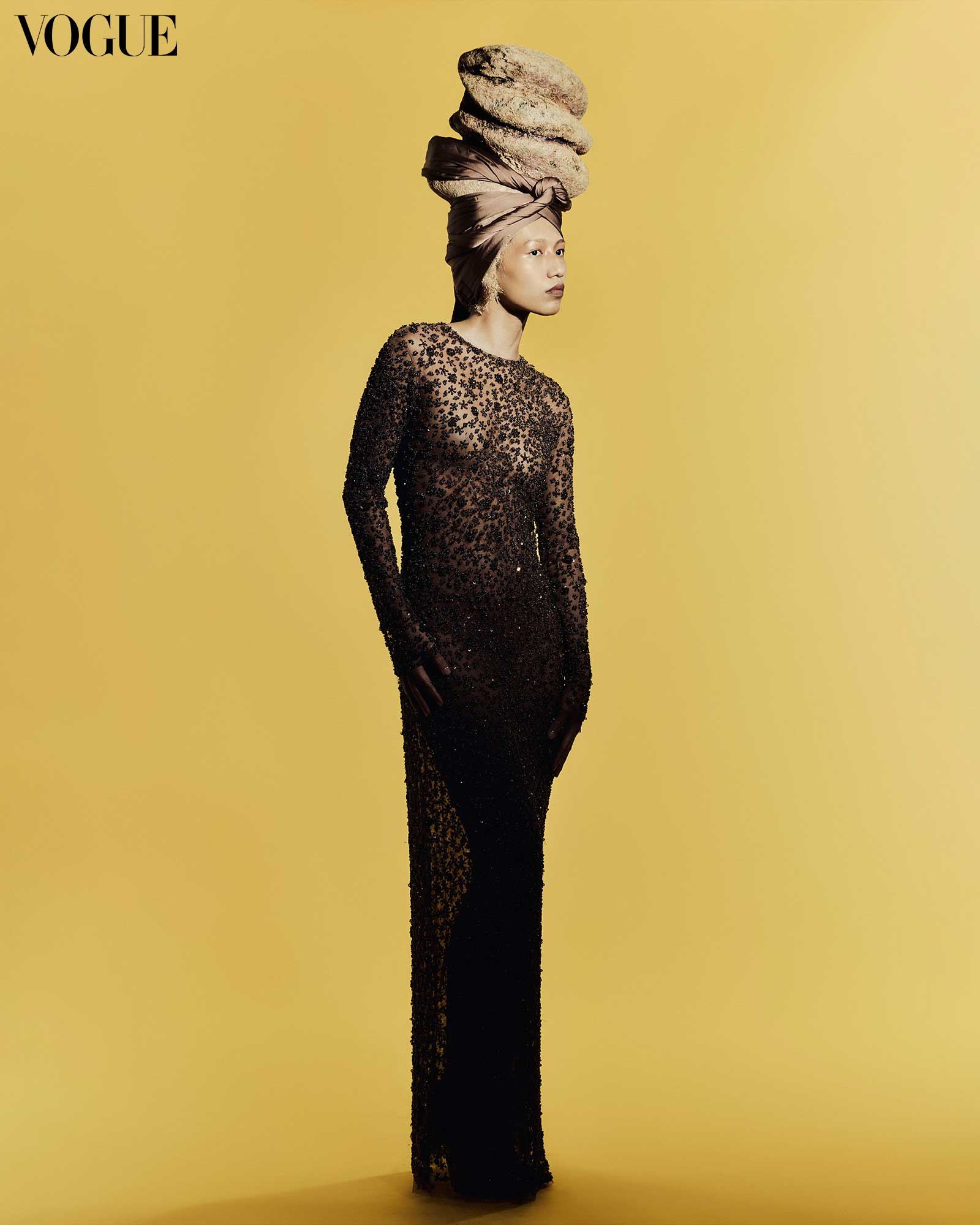
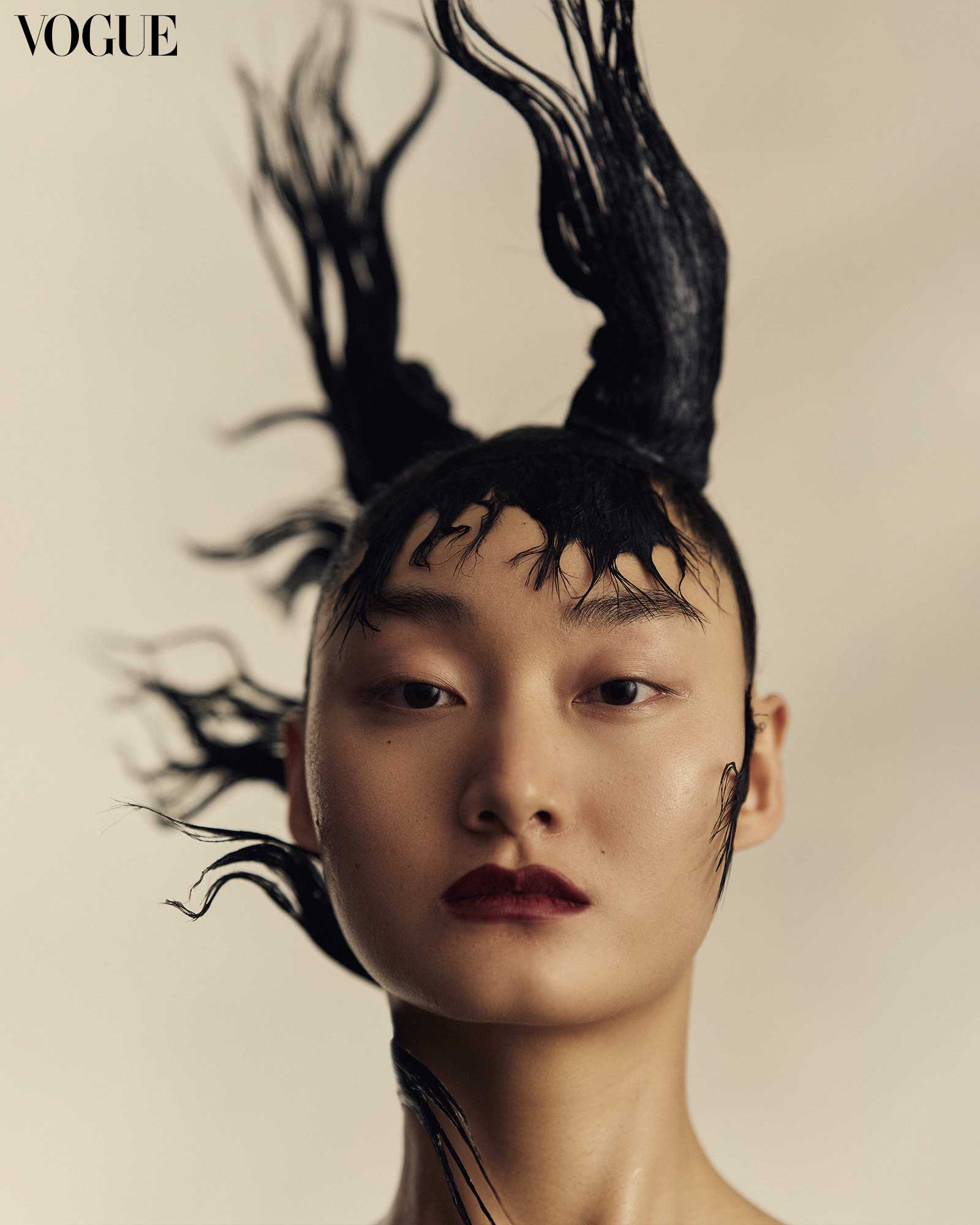
These bathing rituals of the early Filipinos went beyond keeping themselves fresh in a hot climate. They were also social activities that connected them with nature and instilled in them their archipelagic identity. “From the day they are born these islanders are raised in the water,” Chirino observed, “and so from childhood both men and women swim like fish and have no need of a bridge to cross rivers.”
The people of Mindanao likewise placed great significance on their comportment and appearance, especially when it came to the hair. Despite changing fads in how they arranged their tresses, pre-colonial Filipinos grew their hair long: “to cut it was a sign of the deepest mourning, or a punishment,” wrote William Henry Scott. Common to indigenous cultures around the world is the belief that one’s hair is a source of physical and spiritual power. The Bagobo of Davao would cut off a lock of hair from their slain enemy as a war trophy. In the Subanon epic of Sandayo, the hero’s hair is oiled, combed, and coiled eight times into an undoable bun by his mother as he prepares to embark on his journey.
“As Austronesians, we have historically idealized a golden-brown complexion, long straight black hair, and more importantly, expressive eyes.”
Marian Pastor Roces
Filipino standards of beauty would change dramatically as Spanish colonial rule wielded its influence on culture. “As Austronesians, we have historically idealized a golden-brown complexion, long straight black hair, and more importantly, expressive eyes,” says historian and cultural critic Marian Pastor Roces. “Over the last 500 years, Filipinos developed a preference for mestizaje features: mixed genetic heritage.”
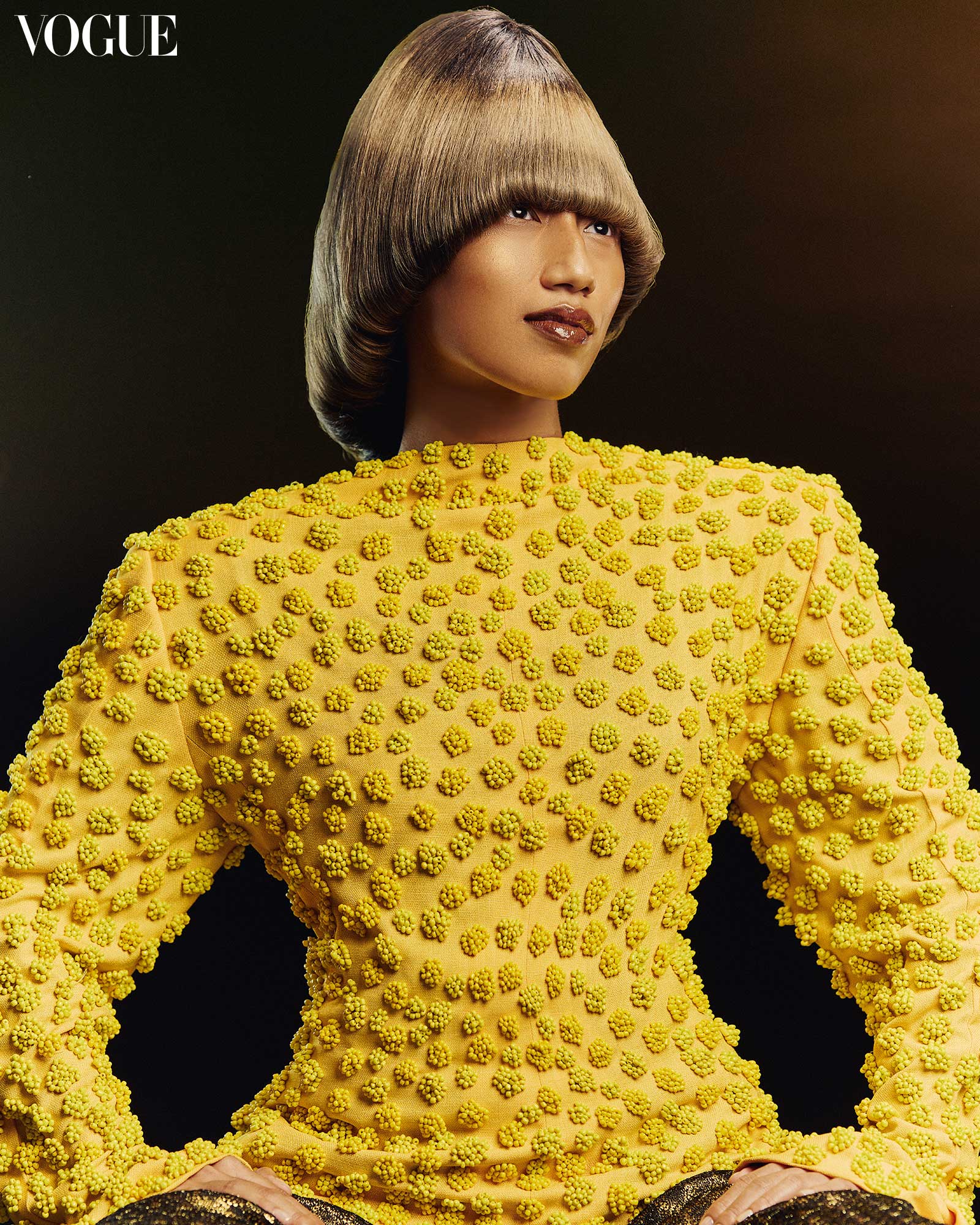
Over time, Filipinos began to adopt Western styles, yet the Filipino woman’s involved approach to hair remains rooted in her indigenous past. Grace Nono, the singer and babaylan scholar, shares a story from a Pagdiwata ritual she witnessed in Palawan, where a Tagbanua spirit channeled by a Tagbanua babalyan started combing the hair of some of the female followers, including herself, an act Grace believes was an expression of care and tenderness.
Perhaps the spirit was recalling a time when women bathed in the river and anointed each other’s hair with perfumed oils: a rite of beauty, a sacred act of healing, and a gift of blessing.
